Estimated reading time 42 minutes, 17 seconds.
Canada is a very, very large country. Most of it is unpopulated. In 1939, it seemed a lot bigger and a lot less populated. Much of the country then was uncharted and wild, accessible only on foot, by canoe or by float plane, and unseen by human eyes.
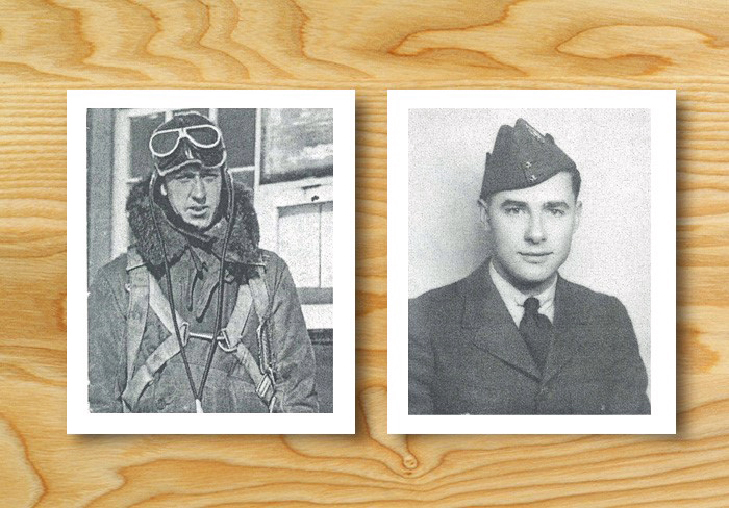
One just has to drive across the centre of New Brunswick, one of Canada’s smallest provinces, to understand the vastness of the entire country. If you head east out of the small town of Plaster Rock along old highway 108, bound for the Miramichi River community of Renous, you will enter a vast uninhabited tract of forested wilderness the size of Kuwait. Beaten by logging trucks and hard winters, the narrow two-lane blacktop surface of N.B. 108 curves, climbs and drops through an apparent wild and even monotonous landscape. A few hundred metres in from the road on both sides, the hollow scars of intense clear-cut logging can be seen flickering like light through the trees and from high ridges. Great swathes of this woodland have been logged out and replanted and yet this is truly a wilderness, a place you enter with a full tank of fuel and where you don’t want to have a breakdown of your car. It’s the perfectly remote spot for the maximum security prison at Renous. The wild is only a right turn away. In 1939, it was far wilder — a forbidding place to overfly in a single-engine airplane.
Preparing for war
In the summer of 1939, Europe was accelerating towards war. Every person in every country in the continent felt the gravitational pull of the impending maelstrom, a black hole of chaos and inevitability. Throughout the far corners of the British Commonwealth (at one time the Empire), politicians, military leaders and ordinary citizens could sense the coming storm. While isolationist America turned its back to the European war, Canada knew its loyal duty was to rally to the Union Jack and the King. But Canada was very far from ready.
That summer, the Royal Canadian Air Force had little to offer in the way of fighting capacity should it be required, but military planners were already creating the systems, equipment and alliances that would result in enormous expansion and a mighty contribution to the successful expedition of the war. The British Commonwealth Air Training Plan was signed into existence that summer, and contracts were signed from coast to coast for aircraft, equipment, facilities, training airfields and instructors, but it would take months to get rolling in earnest. In the meantime, existing squadrons of the Home Establishment were put on alert in the defence of the nation.
The most important and most immediate need was the security of the east coast of the country. While no one expected an invasion, experience in the last war had shown that German U-boats were a major threat to coastal shipping, to the convoys that were inevitable in the event of war, and even to fishing. At the outset of the war, the RCAF was replacing a small fleet of Canadian Vickers Vancouver flying boats with the more capable Supermarine Stranraer, which would see solid service on both Canadian coasts for the duration of the war. To reinforce the anti-submarine patrols along the coast and out over the Atlantic Ocean, the RCAF pressed into service the Northrop Deltas of 8 Squadron, a photographic survey unit based that summer at RCAF Station Rockcliffe, Ont., on the shores of the Ottawa River, just a few miles from Canada’s Parliament.
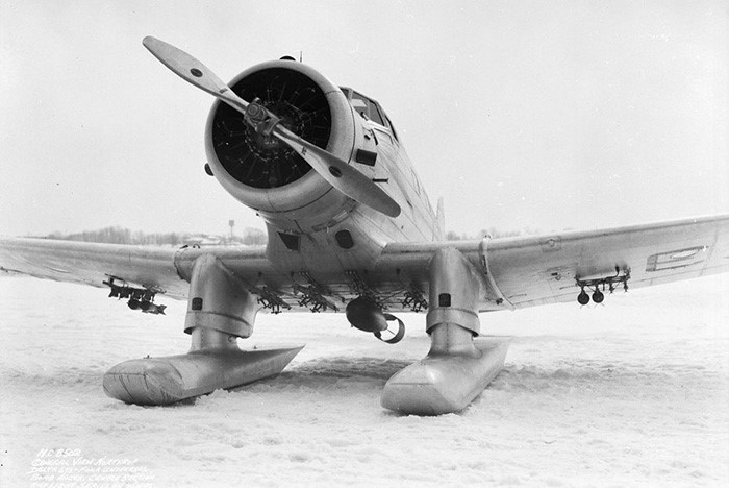
The Northrop Delta
The Northrop Delta was not designed as an anti-submarine aircraft, and in the end would prove to be entirely unsuitable for the job, but it was the most modern aircraft in the RCAF’s fleet. The Deltas were built under licence from Northrop by Canadian Vickers of Montreal, Quebec. A total of 20 were built specifically for photographic work and delivered to the RCAF starting in September of 1939. Originally designed as a passenger transport aircraft, the Delta was a low-wing, single-engine, tail-dragging monoplane of considerable weight and power. It was the first all-metal aircraft to be built in Canada. The type was kitted out for photographic work with camera mounts and ports, and pilots were trained to hold steady and stable courses for aerial photography. A versatile aircraft for the Canadian environment, the Delta could be operated on wheels and skis and had the power needed for float operations. Pilots were required to have skills in all three landing systems.
The RCAF must have thought that one day the Deltas might be needed for a fight, for in the winter of 1938-39, one of the Deltas (RCAF Serial number 673) was modified for combat, and tested with bomb racks and even a Lewis gun firing from a ventral camera port. In the event of war, the float-equipped Deltas could now be modified as reconnaissance and patrol aircraft.
Mobilization
On Aug. 25, 1939, with German armour and infantry massing on the Polish border, the call to mobilize was sent, and 8 General Purpose Squadron began immediate preparations for departure to the east coast. Men were called up, pilots briefed and, on Aug. 26, the seaplane base on the Ottawa River below Rockcliffe was busy with float-equipped Deltas being serviced on land, lowered down the ramp by wheel bogie and cable, and moored on the river, ready for the scheduled departure the next day. Out on the river, RCAF motor launches raced from aircraft to aircraft with mechanics and tools. By end of day, all six Deltas were moored out on the river and ready for an early departure the next morning, Aug. 27.
Crews (a pilot and mechanic for each of the six aircraft) had begun assembling at Rockcliffe the night before. The pilot of Delta 673 was WO2 James Edgerton “Ted” Doan, originally from Vancouver, B.C., but now living in Ottawa with his wife, Vera, and two sons. Doan had come up through the ranks, first as an engine fitter and then cross-training to be a pilot. He was highly experienced, with 1,400 hours in his logbook, and was considered a steady and reliable pilot.
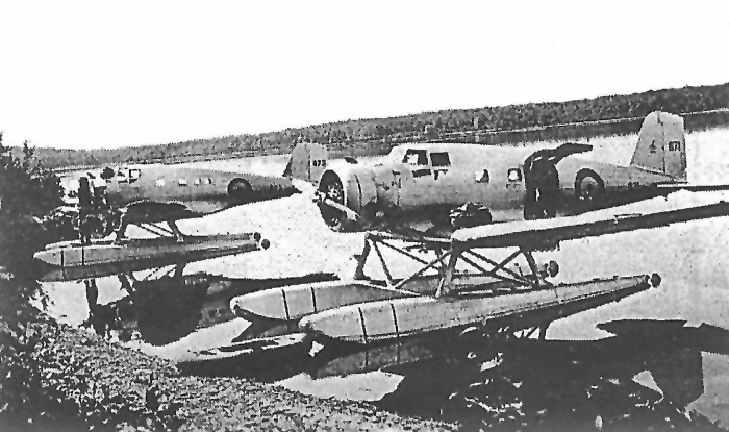
Everyone in the squadron knew they were headed to the east coast, but most assumed Dartmouth, N.S., across the harbour from Halifax. The final destination was not revealed until the early morning briefing on the 27th. It was then that the pilots knew they were flying together to the city of Sydney on Cape Breton Island, N.S. Doan’s mechanic crewmember for the long journey was to be Cpl Guy LaRamee, but a mix-up during the hurried preparations brought him a mechanic by the name of Cpl Dave Rennie instead. Rennie, a young and capable mechanic, was from Ottawa and had grown up in the area known as the Glebe. He had a girlfriend by the name of Lillian Watterson who had driven him to Rockcliffe the night of Aug. 26.
When the six pilots of 8 Squadron took off into a rising sun on the cool morning air at 8:30 a.m., the Ottawa River valley reverberated with the float-amplified sound of six powerful Cyclone-powered Deltas at full power climbing heavily into the day. All six pilots would rely on keeping with the group and map reading if separated. They had no radio communication equipment. They were still a general purpose squadron, but when they landed, they would become a general reconnaissance and then a bomber reconnaissance squadron.
The planned route to Sydney called for them to fly across Montreal, the Eastern Townships region of Quebec, the rugged forests of central Maine and New Brunswick, and to land for refuelling in Shediac, N.B. — seaplane base on the Northumberland Strait. From there, they would follow the north shore of Nova Scotia and cross Cape Breton Island, landing at Sydney, where their war would begin. At a cruising speed of 150 mph (241 km/h) at 3,000 feet, the 1,529-kilometre trip would take six-and-a-half hours of total flying time.
Only five of the six aircraft would make it.
Northrup Delta 673’s troubles begin
While well over the rugged wilderness of Maine, having just flown over the mill town of Millinocket, one of the six Deltas — No. 673 — dropped out of the loose formation and descended towards the forest below, looking for a lake on which to land. Below them was Salmon Stream Lake, and Doan made a smooth emergency landing and taxied up to the shore. Being able to taxi the float plane on the surface meant 673’s engine was generating some power and that the engine did not completely quit. His smooth, well-set up landing also indicated some residual power. Seeing Doan descend and land, F/S William C. Pate and Cpl Guy LaRamee in Delta 671 followed Doan and landed on Salmon Stream Lake, taxiing alongside him at the shoreline. After investigating the problem with the engine, the four men, all experienced mechanics, decided that one of 673’s seven cylinders would need a replacement before they could continue on to Sydney.
Pate and LaRamee left for Sydney to arrange for a new cylinder, while Doan and Rennie prepared the Delta for the work ahead and settled into a fishing and hunting camp they found on a small island. After two long nights waiting, F/S Bob Thomas arrived on Aug. 29 in Delta 676, with the cylinder and tools. The men replaced the cylinder and determined that the engine should be replaced at the soonest possible chance. By the afternoon of the next day, the work was complete on the single cylinder and Delta 673 took off for the remote Norcross seaplane base, 27 kilometres to the east.

There, they cleaned up, rested and wrote a report that was submitted to the operations manager at Rockcliffe. It stated that the crew felt the source of the problem was a “faulty muff installation”. In retrospect, this is a strange entry on the form, given that they got underway to Norcross in the late afternoon of Aug. 30 following the installation of a new cylinder — not the muff heater.
The muff heater is essentially an exhaust heat-exchanger and collector shroud that sends air heated by the exhaust piping to both the carburetor (to prevent icing) and the cabin. The device is still in use today in many aircraft. One of the most serious problems resulting from a cracked or damaged muff heater is exhaust gas that is drawn, along with heated air, back into the engine induction system via the carburetor. This can cause engine overheating and loss of power. There is no indication from the report submitted that the muff heater was repaired or adjusted, though it was mentioned as the probable cause.
Doan and Rennie contacted Rockcliffe and awaited instructions about where they should go next — onward to Dartmouth or back to Rockcliffe for a new engine. With family and a girlfriend in Ottawa, the two men hoped that they would be required to return to Rockcliffe. Towards the end of the day on Aug. 30, they received orders to return to Ottawa for the necessary engine change, with a fuel stop at the sea plane base at Lac Mégantic on the Quebec-Maine border.
The flight to Lac Mégantic on the morning of Aug. 31 was uneventful but, shortly after takeoff after refuelling, the engine failed again and they landed back on the lake. After examining the engine and their situation, they decided to do the engine swap on the shores of Lac Mégantic. This of course, was going to take some time.
Doan and Rennie settled into the Hotel Lake View and took advantage of the excellent food, hot baths and alcoholic refreshments. An engine change on the shores of the lake was going to be a difficult task, requiring the right tools, the engine and a wooden frame to lift the engine. Judging from a photograph of the men during the work, there was already a trolley and frame to lift the engine from the airframe and bring it on shore locate at Lac Mégantic. On Friday, Sept. 1, Doan fired off a telegram to his commanding officer, now at Sydney, and requested that a new engine and appropriate tools be sent to Lac Mégantic as expeditiously as possible.
The engine work under these conditions was going to be arduous and lengthy, and the men were already exhausted. They set about immediately to secure the engine hoist and trolley and begin the business of removing the failed engine.
Realizing they might be in Lac Mégantic for a couple of weeks, Rennie telephoned his girlfriend Lillian Watterson and invited her down from Ottawa by train for the weekend. There is no indication whether this was the weekend of Sept. 2-3 or 9-10, 1939, but the men would not fly out of Lac Mégantic until Sept. 13. Doan had no such opportunity with his wife and small children back in Ottawa, and expressed his envy of Rennie in a letter back home: “My crewman had his girlfriend down for the weekend and it made me feel worse . . . ”
After much hard work, the Delta was ready to test fly on Wednesday, Sept. 13, more than two weeks after the two airmen had set out for Sydney. Throughout their two weeks at Lac Mégantic, neither had expressed any apprehension about the new engine (according to Lillian Watterton), which was fitted with the old muff heater. They were confident in their own abilities and anxious to get to their unit and into the war. On the 13th, they tested the engine in run-ups and taxiing on the lake, then took to the air for a flight test. Everything checked out and Doan telegraphed his commanding officer and informed him of the plan to leave early on Sept. 14.
The commanding officer sent instructions to Doan about a new course that, in retrospect, sealed their fate. Because Canada had declared war against Germany on Sept. 10, it was no longer possible for Canadian military aircraft to overfly Maine, since the United States was neutral and would remain neutral for two more years.
They were required to fly a fairly direct route to the St. Lawrence River, turn northeast at Quebec City and follow the river’s flow to the town of Rivière-du-Loup on the south shore of the river in the Kamouraska region of Québec. Upon reaching this point, they were to turn southeast and head for Grand Lake and eventually to land, once again, at the seaplane base in Shediac for fuel. The two airmen took off at 10 a.m. that morning and flew north towards the big river. Doan would have been anxious about getting to the St. Lawrence, as there were few spots to put down until they got there.
This new requirement to skirt neutral America added several hundred miles to the journey to the coast, and flight over long stretches of “dry” central New Brunswick. For obvious reasons, float plane pilots preferred to fly over areas with plenty of water to land on in case, as Doan and Rennie had already been forced to do, they had to make an emergency landing.
Flying down from Rivière-du-Loup on the south shore of the St. Lawrence meant flying through the high backbone of the Gaspé region, past the welcome stretch of Lac Témiscouata, over Edmundston and angling past the small lumbering and gypsum-mining community of Plaster Rock, heading southeast. It was here that they would have to enter the vast boreal forest of central New Brunswick, an endless rolling landscape of second growth timber measuring about 100 by 150 kilometres, with only one lake capable of accepting an emergency landing by a Northrup Delta.
The area had been logged out and replanted in the early part of the 20th Century, and there would be no need for loggers or prospectors to venture into the area for years to come. There were no roads in those days, no hunter’s cabins and, worst of all, little or no chance to land a floatplane safely.
At 9:55 a.m. on Sept. 14, Doan lifted off the still waters of Lac Mégantic and turned towards Québec City to the north. His recent promotion to warrant officer second class became effective on that day. It was also five days before his fifth wedding anniversary.
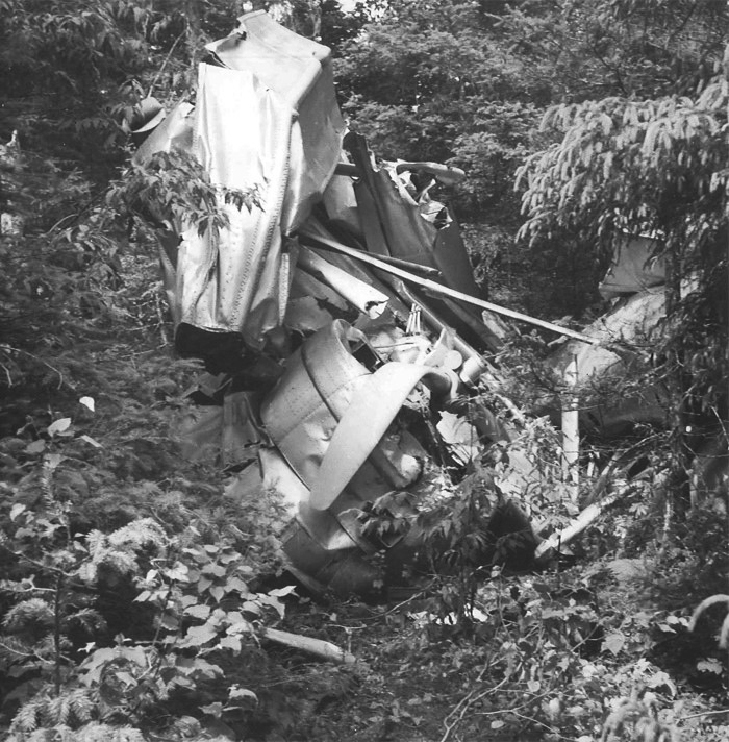
673 disappears
He planned to pick up the massive flow of the St. Lawrence River to the east of Quebec, and turn to follow the shoreline. Around noon on that rainy and overcast day, Cpl Arsenault, a Royal Canadian Mounted Policeman, spotted the plane above Rivière-du-Loup. Doan shaped his course from northeast to southeast, making a 90-degree turn over the town. The aircraft was low enough for Arsenault to make out the RCAF roundels and serial number (673) under the wings.
In 1939, aircraft sightings were something people paid attention to and remembered details from. Just two years later, the skies over much of Canada would be seamed with formations of the thousands of training aircraft of the British Commonwealth Air Training Plan, Ferry Command and the RCAF. But in September of 1939, a man who spotted a rare overflying aircraft of the size of the Delta in a remote location remembered the facts of its passing. At around 12:30 or 1 p.m. local time (New Brunswick is in the Eastern Standard Time Zone), a forest engineer by the name of Atkinson reported seeing the Delta over the small community of Green River (likely Rivière Verte) about 15 miles (24 kilometres) southeast of Edmundston. At around the same time, a forest ranger by the name of Ralph Harris spotted the aircraft. As a forest ranger, he was expected to note the passing of all aircraft and his report was credible.
A few minutes later, Delta 673 was again spotted, by two brothers named Ogilvie who were preparing for the opening of salmon fishing season on Sept. 15. Their position was east of the small lumber town of Plaster Rock. The weather in the area had improved since the Delta had left the cloud and rain showers along the river. It was partly cloudy and warm in the Plaster Rock area that afternoon, typical of central New Brunswick for that time of year. Doan and Rennie continued on their way towards Grand Lake. Doan had flown over the area several times during his flying career and knew that he was entering a region almost devoid of suitable water landing spots. His only chance for a safe water landing would be at Beaverbrook Lake, which, at 2.4 kilometres long, could easily accommodate the heavy Delta on floats.
He would have entered this region with some trepidation, but fully confident in the continued performance of the engine. Otherwise, he would have turned back.
These sightings seemed to indicate that the aircrew were on course and relatively on time for the big water of Grand Lake in south-central New Brunswick, east of Fredericton, where they were to make a left turn towards Shediac on the coast.
However, the Delta was spotted again a few minutes later by a survey crew about 15 miles (24 kilometres) southeast of Plaster Rock. One of these men, a Mr. Castigan, said he heard the aircraft’s engine sputtering and missing. The flying distance between Plaster Rock and Beaverbrook Lake is approximately 25 miles (40 kilometres). Despite what appeared to be engine trouble, Doan was nursing the engine and continuing on his way, perhaps to attempt a landing at Beaverbrook Lake — his best chance at about 10 miles (16 kilometres) ahead.
He never made it.
Shortly after being spotted by the men of the survey crew, Doan, Rennie and Delta 673 disappeared over the horizon and were never seen again.
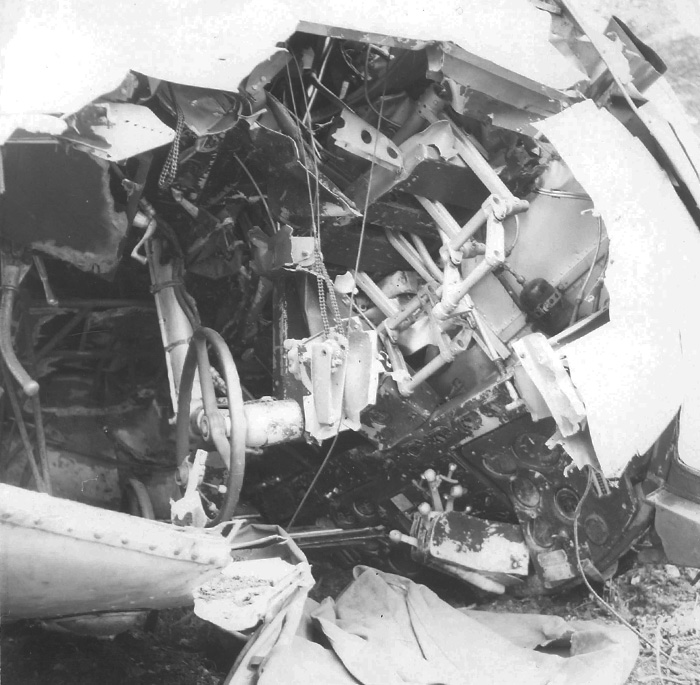
In the early afternoon of Sept. 14, 1939, in a low valley near Beaverbrook Lake, the heat was oppressive and the humidity high. The only sounds were the creaking pulley cries of blue jays, the buzz of cicadas and the hot wind in the tree tops. The reforested softwood evergreens shaded the valley floor where, 20 years before, the old growth had been felled and limbed. At precisely 10 minutes after 1 p.m., the valley reverberated with the sputtering and coughing of a big radial engine in trouble overhead and then out of the hazy summer sky, a shadow and whistling sound flashed through the tree tops. A millisecond later, the heavy mass of a Northrop Delta cleaved the forest canopy, crashed through the foliage and slammed nose and floats first into the valley floor. The shriek of metal and the horrid, heavy crash lasted but seconds — instantly twisting and repositioning the parts of Delta 673 in a small area below a deep green canopy that closed over the metallic and human carnage. There was no fire or broken trees to mark the spot where it entered the forest.
Within a minute, all that could be heard would have been the ticking of the heat from the now dead engine, the drip of aircraft fluids and human blood. It is not likely that the two airmen inside survived the heavy impact, but their last sight as they held out their arms to protect themselves was most certainly the green treetops of a land few people ever walked through and the dark forest floor below. In a few minutes, the cicadas resumed their rattle and the blue jays shrieked their concern. The misshapen metal containing Doan and Rennie would remain here unseen for 19 more sweltering summers and 18 hard New Brunswick winters.
Lost for 19 years
In the first few weeks, it is likely that search aircraft overflew the spot or nearby Beaverbrook Lake where Doan and Rennie were so obviously trying to land, but there was no wound in the canopy to hint at the end of two bright young lives. In a few days, the weather and the animals began to reduce the once-human contents held within the broken air frame. In a few months, the snow began to fall and the trees continued to grow and close over the violent place. The only witness to what happened was the New Brunswick wilderness, and it would never tell the whole story.
When Doan and Rennie failed to show up at Shediac, the Royal Canadian Air Force was not, at first, overly concerned. Doan was an experienced pilot and the Delta was equipped with floats. It was very likely that he had made an emergency landing of some sort on a lake or river under his flight path or perhaps in Northumberland Strait, the body of water separating New Brunswick from Prince Edward Island.
The next day, Sept. 15, was Vera and Ted Doan’s fifth wedding anniversary and the birthday of Rennie’s mother, Isabella. The two Ogilvie Brothers had begun their salmon fishing season near Plaster Rock. By now, there was concern about the fate of the two men and Delta 673, and telegrams were sent to Vera and to Rennie’s parents.
It is always sad to hear of the small bits of their ongoing lives that were unfolding when they got the news. Isabella Rennie had just that minute told her neighbour that she was surprised that she had not heard from her son on her birthday as she always did. In the next moment the Canadian Pacific Telegraph delivery boy wheeled up on his bicycle.
Vera Doan had just finished baking a sheet of cookies when the doorbell rang. Mrs. Doan’s telegram stated:
“SYDNEY N.S.
REGRET TO STATE THAT YOUR HUSBAND DEPARTED FROM MEGANTIC PQ IN DELTA AIRCRAFT SIX SEVEN THREE ON FOURTEENTH — FOR SYDNEY NOVA SCOTIA AND HAS NOT BEEN SEEN SINCE. FIVE AIRCRAFT OF THIS SQUADRON EMPLOYED ON SEARCH OF AIRCRAFT
OC NO 8 GP SQUADRON.”
The initial stages of the search involved flying the planned route of Delta 673, looking for the big aircraft on lakes, ponds and rivers and checking for smoke or any visual signs of the missing aircraft. RCAF personnel visited or telephoned various official agencies in the search area looking for details or reports of the aircraft. These included RCMP detachments, RCAF stations and outposts, forestry agents and logging companies. During these interviews, the aforementioned sightings came to light and gave searchers a general sense that Doan and Rennie had been in the Edmunston/Plaster Rock area in the early afternoon of Sept. 14.

The search continued for weeks, but nothing was ever found. The RCAF worked with aircraft from the Department of Transport as well as the Irving Oil Company, but nothing was turned up. The RCAF dismissed the report by Castigan and the survey crew, despite the fact that there were a number of men in his party. Instead, they focused on another witness, a Mr. Levesque, who said he saw and heard an all-metal monoplane aircraft near Saint-Joseph in the Green River Lakes area, which was much farther north. He stated that he heard it making noises that indicated the pilot was having trouble with the engine. This report was more than 100 kilometres northwest of the actual site of the crash. In believing Levesque’s report that the engine was making “sputtering noises”, the RCAF began to think that the aircraft would be found in this area and focused its attention there. They rightly felt that Doan would not have pushed on for another 100 kilometres if he was experiencing engine trouble. There was also an erroneous report of an aircraft heading east near Upper Blackville on the Miramichi River. If believed, this would indicate that Doan was closing in on the coast, possibly near today’s Kouchibouguac National Park.
Both of these erroneous reports had the searchers looking in the wrong places.
When the leaves fell off the deciduous trees in the middle of October, searchers were able to see through to the ground, but still nothing was spotted. The RCAF continued to search until the end of October, but no sign whatsoever of Delta 673 was ever found. It was thought that Doan and Rennie had crashed in heavy coniferous bush that would have covered the site, or had flown out over the ocean and had landed in the sea, only to be swamped by heavy seas. The fact that nothing would be found for nearly two decades let the RCAF to settle on the latter scenario as most likely.
The fate of Doan and Rennie would remain a mystery for 19 years. These two young airmen would become the very first Royal Canadian Air Force casualties of the Second World War and the first of 809 Commonwealth airmen and airwomen whose names are on the Commonwealth Air Forces Ottawa Memorial. The Ottawa Memorial commemorates 809 men and women of the Air Forces of the Commonwealth who lost their lives while serving in units operating from bases in Canada, the British West Indies and the United States of America, or while training in Canada and the U.S.A., and who have no known graves. That’s 809 men and women who simply disappeared while training or serving and were never seen again.
Finally found
In July 1958, in the middle of yet another hot and humid central New Brunswick summer, crews of the J.D. Irving forestry company were surveying and building a new logging road through the area around Beaverbrook Lake, where they had recently purchased the logging rights. It would soon be time to harvest the second growth softwood forest in the area. A company aircraft was employed to scout ahead of the survey team for major impediments to road building such as ponds, ravines and streams. While checking the proposed route, the pilot saw sunlight glinting off of something metallic and shiny deep in the forest. Despite circling the object, he could not determine what it was, only that it should not be there — 29 kilometres from the nearest sign of civilization. The pilot guided the two men from the road survey crew, Frank Barkhouse and Charlie Grey, towards the spot.
It was there, just a short distance from Beaverbrook Lake, that the remains of Delta 673 were finally found — nearly 19 years after it went missing.
Amidst an area of softwood trees, Barkhouse and Grey found the wreckage of an all-metal monoplane on floats. It was clear that the aircraft had hit the earth almost vertically, for the wreckage was in a compact area and there were no indications of trees that had been broken or knocked down by the impact. There was no evidence of any skeletal remains in or around the cockpit. The men remained at the site only briefly and then trekked out of the bush and headed to Juniper some 30 kilometres to the southwest to report their findings by telephone to the RCMP and Stuart Cougle, the local forest ranger.
The next morning, Cougle and Cpl Ron Rippin drove to Juniper, collected the two men from the survey crew, and drove back to Beaverbrook Lake. The men made a much closer and more detailed inspection of the wreckage and the entire site and collected a few objects to assist them in identifying the aircraft and its last occupants: a wallet, belt buckles, a piece of an Ottawa newspaper dated Sept. 13, 1939, brass buttons, metal components from parachute harnesses, a camera, and untouched rations. They also found the partial remains of a suitcase with the monogram D.A.R. imprinted on it, a razor, a flashlight, a bayonet, and some loose change.
Unfortunately, the media got wind of the story of the mysterious wreckage of an old RCAF aircraft in the woods of New Brunswick and it was broadcast with the radio news across the country. Before it could be confirmed as the remains of Delta 673, both Vera Doan and Cpl Rennie’s sister heard about the discovery and knew in their hearts it was the Delta their loved ones had been piloting. The RCAF thought it likely that this was Doan and Rennie’s aircraft, but needed to officially verify that this was the case. They assembled a search and investigation team at RCAF Greenwood, N.S., and four days after the wreckage was spotted, they were flown to Beaverbrook Lake in a de Havilland DHC-3 Otter from No. 103 Rescue Unit, piloted by F/O Patrick Donaghy, who happened to be in Greenwood providing float training.
The men spent several days searching the wreckage carefully, as well as the surrounding area, but found little to add to the story, except the precise time of the accident, which was registered by the stopped aircraft clock. In a letter to Vera Doan in 1958, A/V/M J.G. Kerr noted the tally of personal effects found at the site, which was very little: “sun glasses, wallet, piece of shorts, piece of air force shirt, buckles from parachute, razor, newspaper, watch belonging to Rennie stopped at 1310 hrs also, a/c watch stopped at same time, rubber mitts with Doan’s name, anchor rope, a/c emergency ration unopened and well preserved”. No human remains were found during the RCAF’s search but, a short time later, Dr. John Lockhart, a local physician and pilot from Bath, N.B., on the Saint John River, flew his Republic Seabee into Beaverbrook Lake and hiked to the site. He was looking specifically for human remains and found skull fragments inside the cockpit area, which led to the conclusion that the two men were killed upon impact.
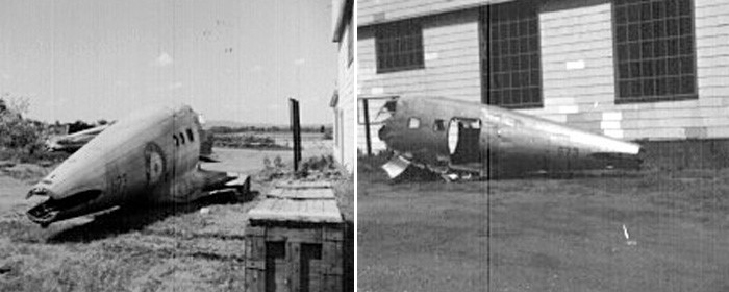
Delta 673 transported to Ottawa
Ten years after the discovery of Delta 673, the National Aviation Museum (now the Canadian Aviation and Space Museum) and the Canadian Armed Forces had the wreckage of Delta 673 hoisted by helicopter from the valley near Beaverbrook Lake and prepared for transportation to its facilities in the old Second World War hangars at RCAF Station Rockcliffe where the National Aircraft Collection was housed at the time. The museum curators wanted the wreckage for restoration, as it represented the only extant example of the Canadian Vickers-made Delta, the first all-metal, stressed-skin aircraft to be built in Canada, as well as the first RCAF aircraft to be lost in the war. Although all the wreckage was brought out, it’s not clear why only the fuselage arrived and all else, including the troublesome engine, was lost en route. The wreckage is categorized as “unrestorable” due to the missing components and, quite possibly, because it is, in effect, a war grave.
Memories are short and history seems to have covered this aspect as much as the forest covered up the wreckage for nearly two decades. Mystery still clouds the story.
In July of 1958, when Cougle left with Rippin to travel to Juniper, N.B., to interview the men who reported finding a mysterious crashed aircraft in the forest near Beaverbrook Lake, he left behind his ten-year-old son Jim, who had begged to join them. For a young boy growing up in sleepy New Brunswick in 1958, this seemed like the ultimate adventure, but for the agents of the government of Canada, this was a serious and possibly tragic situation that required a professional detachment.
Young Jim Cougle would grow up to be a historian of note in New Brunswick, author of several books on subjects pertaining to New Brunswick and Canadian history. In 2004, he published a small book or historical monograph about the story of Doan, Rennie and Delta 673.









Now in 2019 New Brunswick is in the Atlantic Time Zone. I don’t know if it was so in 1939.